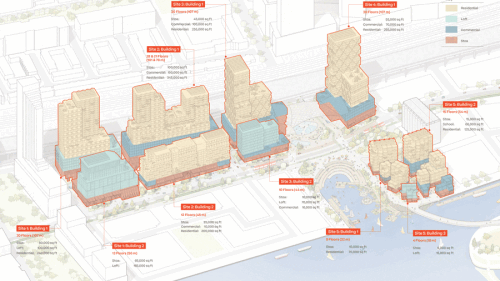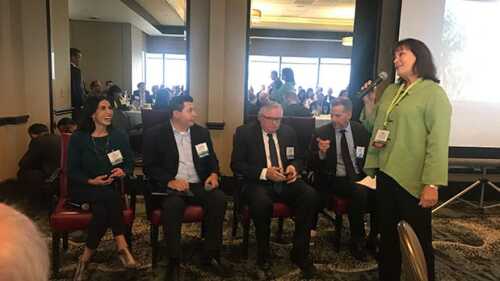<b>Equitable Development</b>
Positive news for Greater Philadelphia going into 2020 includes job growth, a growing population of young people, strong demand for apartments, and a booming, new biotechnology business, said panelists at a ULI Philadelphia event.
In 2018, Los Angeles-based real estate firm LOWE, sold its hotel operating subsidiary to Hyatt Hotels for $480 million. That kind of exit was not part of some original projection, said Robert “Bob” S. Lowe Sr., the company’s founder and a ULI Foundation Governor, speaking at a ULI event in South Carolinain mid-November.
In the Waterfront Toronto RFP for Quayside, Alphabet’s Sidewalk Labs saw a key opportunity for a demonstration project unbound by the conventions of traditional urban planning or real estate economics. This was something new: a chance to innovate at the urban scale, to develop, deploy, and measure the success of a web of new technologies in an actual neighborhood.
By the end of 2019, the first families will move into new, million-dollar townhouses at Edge-on-Hudson, a $1 billion development that will eventually bring more than a thousand new residences to Sleepy Hollow, New York.
Members of the 55-plus market are planning their next move—and they will do it on their terms.
By 2040, metro Atlanta is projected to grow by 2.5 million people, bringing it to 8 million people, according to the Atlanta Regional Commission. Understanding how transportation and land use can accommodate this increase was one of the subjects discussed at a recent ULI Atlanta event. The event was cohosted in partnership with Perimeter Connects and the Perimeter Community Improvement Districts.
The persistent theme over the current economic cycle of “lower for longer” growth has contributed to a record expansion cycle that has surpassed 10 years. Results from ULI’s latest “Real Estate Economic Forecast” show that trend is likely to continue into 2021, said panelists speaking on a webinar discussing the survey results.
Like bookends, two major developments are transforming southern San Diego County’s city of Chula Vista on its most eastern and western fronts: the 535-acre (216 ha) Chula Vista Bayfront development on the San Diego Bay, and Otay Ranch, which will provide nearly 10,000 acres (4,000 ha) of master-planned, multiuse development, with a projected population of more than 110,000.
Using a facilitated conversation format honed at previous ULI meetings, the “fishbowl” at ULI’s Fall Meeting in Washington, D.C., brought together 12 experts to discuss the natural tension between cities’ need to encourage housing and economic development—and the community backlash that often results from specific proposals.
Despite the shock of a trade war between the United States and China, the economies in the vast Asia Pacific region are projected to keep growing—as are the opportunities to invest in commercial real estate. Huge investments in infrastructure are helping keep these economies growing.






